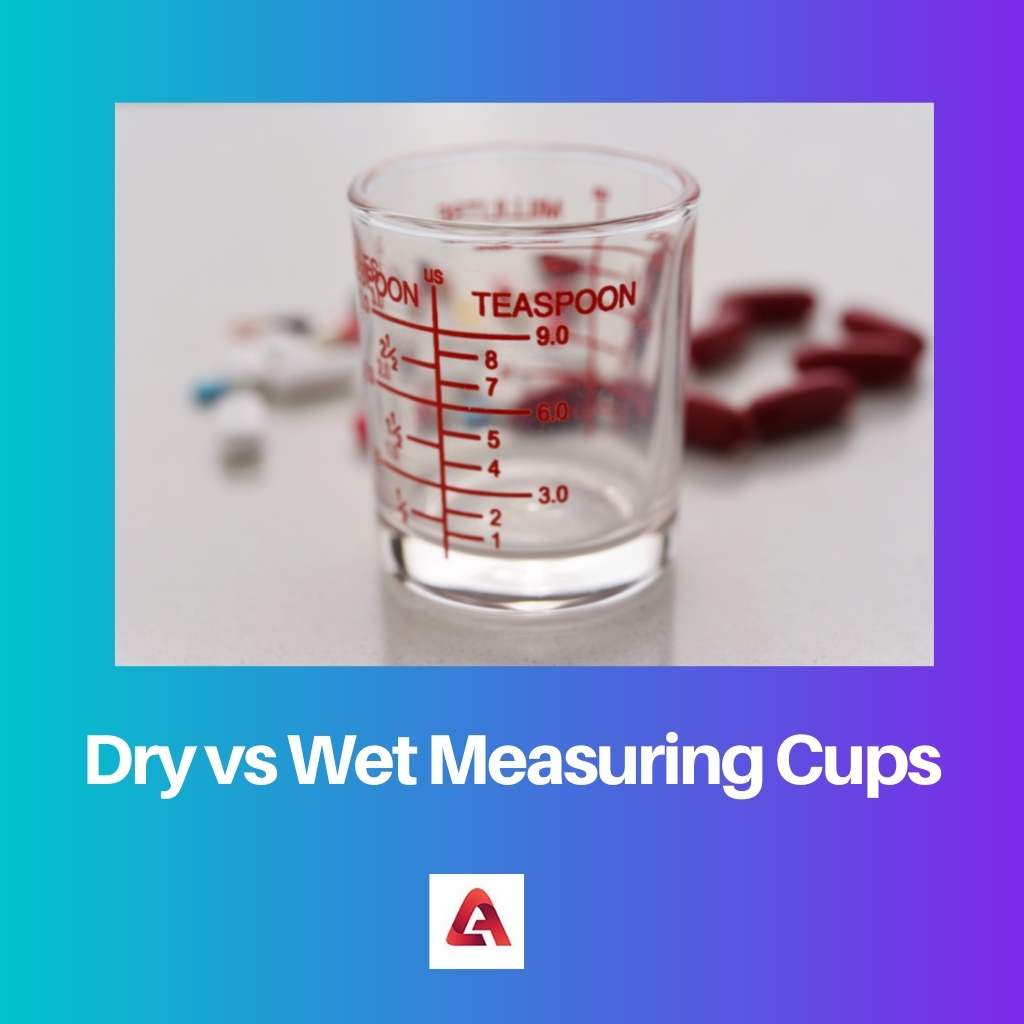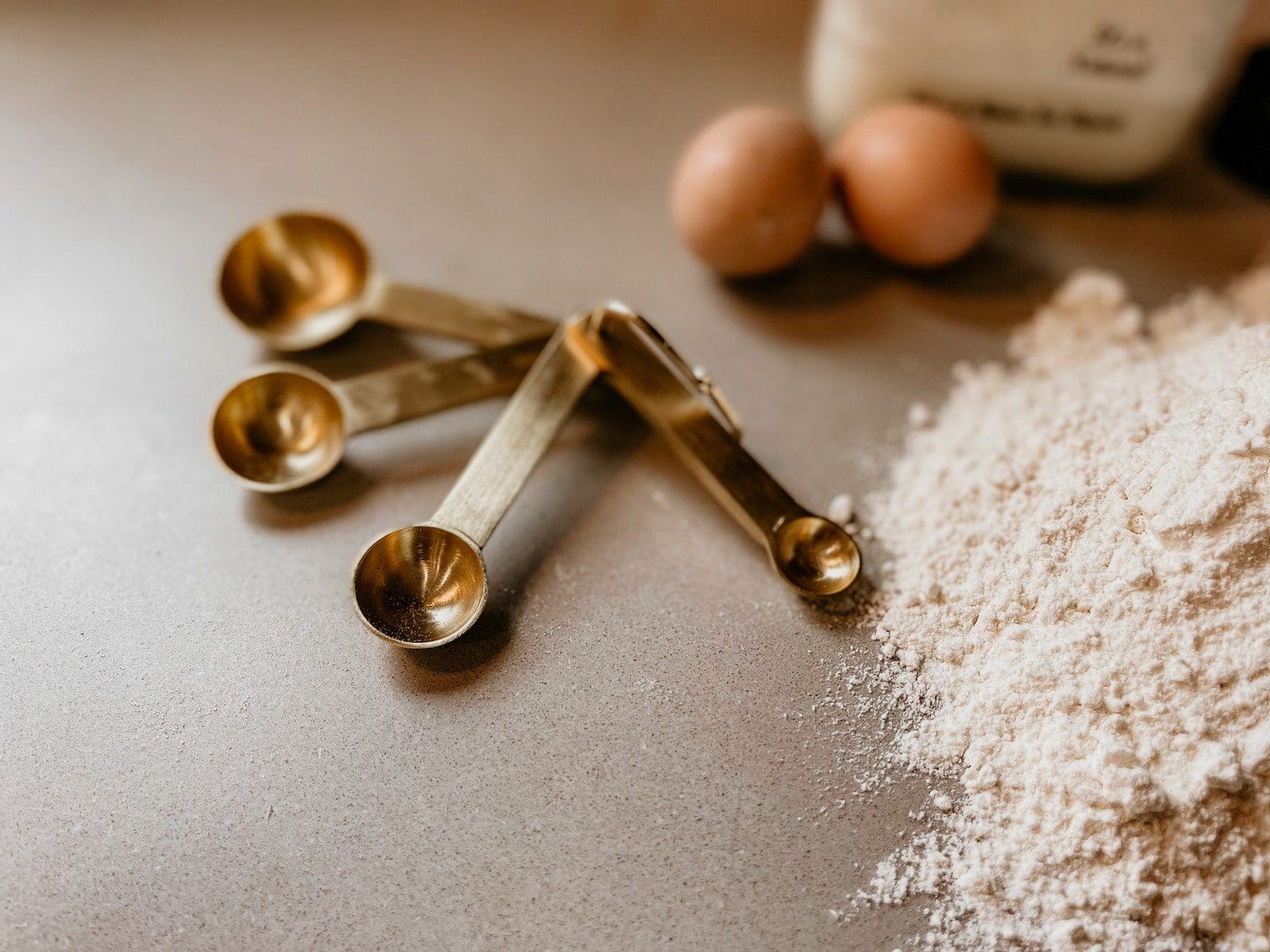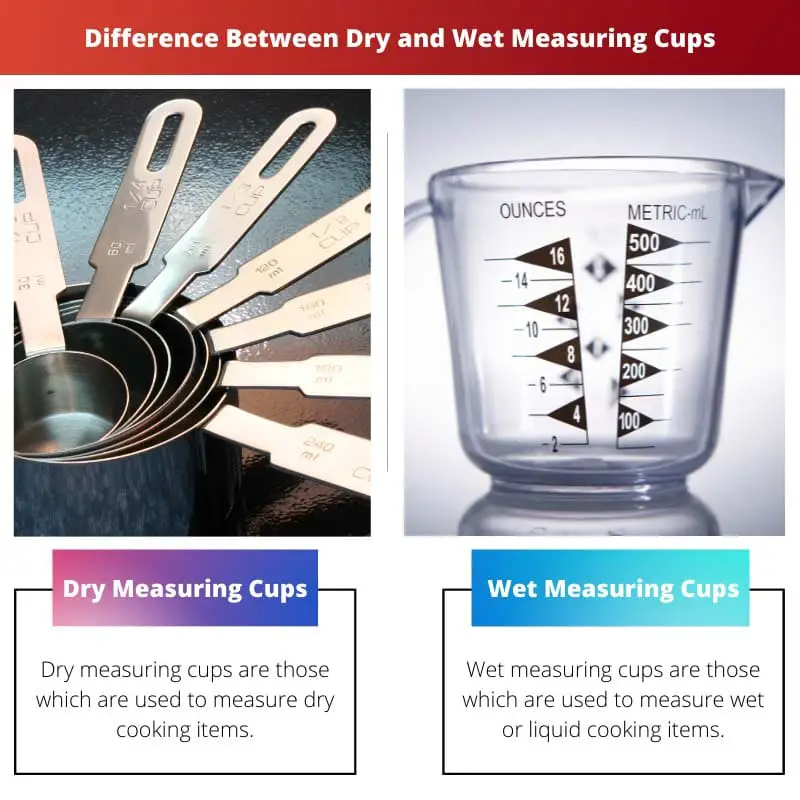People wonder why they need to have both designs of the cups with both sets of dry and wet. Although both designs, be they wet or dry, have the same volume to hold items in them, sometimes they are designed more accurately.
All the accurately designed measuring ups require ingredients respective to their size and holding capacity. This is why it becomes important to learn the uses and differences between dry and wet measuring cups.
Key Takeaways
- Dry measuring cups measure solid ingredients, while wet measuring cups are designed for liquids.
- Wet measuring cups have a spout for easy pouring, whereas dry measuring cups feature a flat rim.
- Accurate measurements require levelling off dry ingredients in a dry measuring cup, while liquid measurements rely on reading the meniscus in a wet measuring cup.
Dry vs Wet Measuring Cups
Dry measuring cups are a type of cup used to measure dry cooking ingredients or solid items like nuts and berries and are made with thick plastic or metal. Wet measuring cups are cups made for measuring liquid items that could be spilt like sauces, juice, or oil. They are designed to prevent spillage.

A dry measuring cup is used for measuring dry cooking items or some solid items like berries and nuts. They are made of hard materials like thick plastic metal.
The sets of dry measuring cups include the size of ½ cup, 1/3 cup, ¼ cup, and 1 cup. While using these cups for dry ingredients, the capacity of the item is measured to the top level of the cup so that the exact measurement comes out.
A wet measuring cup is made for measuring liquid light items. Basically, those cooking ingredients that might have a chance of being spilled, like juice, sauces, oil, etc.
To protect these items from being spilled, they have a little line at the end of the cup from the bottom. This is where it avoids any kind of spillage and keeps the ingredients stay put.
Comparison Table
| Parameters of Comparison | Dry Measuring Cups | Wet Measuring Cups |
|---|---|---|
| What are they? | Dry measuring cups are those which are used to measure dry cooking items. | Wet measuring cups are those which are used to measure wet or liquid cooking items. |
| Spillage | Chances of spillage are not that high while measuring with dry measuring cups as they are only used for dry items. | Liquid items are more prone to spillage, and that is why they are specially designed for avoiding any kind of spillage. |
| Used for | They are used for measuring dry items like flour, nuts, berries, cherries, fruits, etc. | They are used for measuring liquid items like sauces, cooking oil, vinegar, water, etc. |
| Substitutes | You can use a kitchen scale, spoons, or even wet measuring cups in place of dry ones. | You can use a kitchen scale, spoons, bottles, or even dry measuring cups in place of wet ones. |
| How to use | Use spoons or scoops into the cups while pouring the item. Then try to scrape away the top of the ingredient using the back of a knife. | Simply pour the item into the cup according to the need and measure on the scale. |
What are Dry Measuring Cups?
Dry measuring cups are measuring cups for dry and solid cooking ingredients like flour, nuts, and other cooking items. There are specific instructions you should follow while using these dry measuring cups.
Use spoons or scoops into the cups while pouring the item. Then, try to scrape away the top of the ingredient using the back of a knife or any other material. This makes the ingredient stay in a particular amount on the whole level.
For measuring something different, like some herbs or anything green, you have to put them in the cup, and there will be no need to level them off after putting them into the cups as they are themselves solid.
You can simply count the amount of them before. It happens that the recipe itself indicates whether the ingredients should be packed in the cup or not.

What are Wet Measuring Cups?
Wet measuring cups are those designed for measuring wet or liquid cooking items like cooking oil and sauces and measuring their amount for your recipes without exceeding or limiting their amount in the dish.
But sometimes, there comes a problem with some recipes as the cups intend to be for the dry ingredients while requiring wet measurements. This happens and vice versa, too.
When the cup asks for dry ingredients, the measurements should be for dry ones. The wet measuring cups have a line at the end in the bottom portion of them.
This is because liquid items are prone to be spilled, and the line prevents spillage from the cup.
When the above problem arises, like pouring water into a dry measuring cup, always remember to fill the cup to the brim to avoid any spillage, as the dry cups don’t have the bottom line like the wet ones.

Main Differences Between Dry and Wet Measuring Cups
- The main difference between dry and wet measuring cups is how they are used and for what they are used; dry measuring cups are those that are used to measure dry cooking items, while Wet measuring cups are those that are used to measure wet or liquid cooking items.
- The other difference is the spillage while measuring an item in those cups. Chances of spillage are not that high while measuring with dry measuring cups as they are only used for dry items, while Liquid items are more prone to spillage, and that is why they are specially designed to avoid any kind of spillage.
- Dry cups are used for measuring dry items like flour, nuts, berries, cherries, fruits, etc., while wet ones are used for measuring liquid items like sauces, cooking oil, vinegar, water, etc.
- For substituting dry cups, you can use a kitchen scale, spoons, or even wet measuring cups in place of dry ones, while for substituting wet ones, you can use a kitchen scale, spoons, bottles, or even dry measuring cups in place of wet ones.
- You can use spoons or scoops in the cups while pouring the item. Then, try to scrape away the top of the ingredient using the back of a knife, while for wet ones, you pour the item into the cup according to the need and measure on the scale.

- https://www.sciencedirect.com/science/article/pii/S2214785320386028
- https://onlinelibrary.wiley.com/doi/abs/10.1111/j.1439-0396.2010.01063.x

I think this was a bit too much detailed information, I got a bit bored reading it, to be honest.
There might be people who appreciate the thoroughness of this article, so I think it suits a certain audience.
The article is clear and well-documented. It’s great to have extensive information and not just a quick rundown of the differences between dry and wet cups.
Exactly, this isn’t just some superficial explanation. It includes facts and instructions that are valuable to anyone who wants to cook and bake properly.
This is a great resource, and I find it very useful. Good job presenting the information in a clear and understandable way.
I think it’s perfect for those who maybe lack the confidence in the kitchen, such a detailed and accessible explanation is really valuable.
I agree, it’s definitely a helpful guide in the kitchen, and I appreciate the way the data was organized into a comparison table.
Seems like a very comprehensive and informative comparison between dry and wet measuring cups. Anyone who’s unsure about which to use for what ingredient can learn a lot from this article.
I completely agree! This is a great and detailed guide for those who might not be very experienced in the kitchen or just forget which cup is used for what kind of ingredient.
Honestly, I think this type of information is widely available, and most people probably already know the difference between these two cups, so I fail to see the point of this article.
I see your point, but not everyone might know all these details or remember them right when it matters. I think it’s always good to have a reliable source of information.
This article might be a little too detailed for some, I think. The difference between dry and wet measuring cups is simple, but this is an in-depth and well-researched explanation.
I think even experienced cooks can find something useful in the comparison table and the instructions on how to properly use dry and wet measuring cups. I, for one, learned something new.
I think that the detailed information is exactly what sets this article apart. It’s a great resource for those who want to improve their cooking skills and knowledge.
So, which one’s better and why? I think the article didn’t really clarify that.
The comparison table is a great way to sum up all those technical details and make them easier to understand.
I agree, the table is very useful and a great addition to the article.
It definitely simplifies the differences, I think the table helps to see the distinctions clearly.